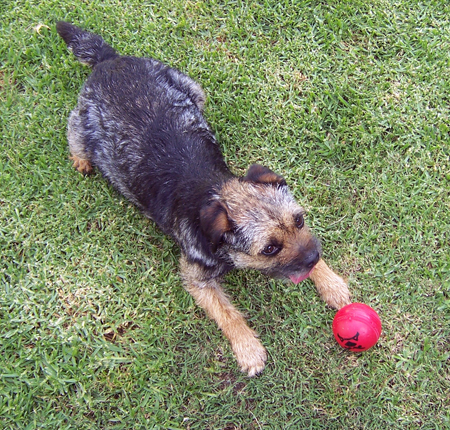Messages for Dog Trainers from Ian Dunbar
This post is part of the series in response to Dunbar’s 2012 Australian seminars. See index.
There were a few gems of advice throughout the seminar on things dog trainers should acknowledge and do when working with clients. They can be summarized as:
- When you’re working with an owner, don’t get slugged down with data transfer, explaining things, and ‘telling’. Don’t waste good dog training time talking about dog training, instead: Do some dog training!
- Use and promote the resources on DogStarDaily (especially Before You Get Your Puppy and After You Get Your Puppy).
- The ‘best’ method for dog training is normally the quickest, easiest, and most effective for a pet owner. (Explaining learning theory is normally not quick, easy, or effective.)
- The 6 Es of dog training: Easy, Efficient, Effective, Enjoyable, Efficacious (do its job but not produce side effects), Expedient (techniques should be suitable for pet owners).
- Use games. Games are fun, they motivate everyone (the dog, the owner, spectators, and the trainer). They allow a way for you to quantify a dog’s performance without the ‘pressure’ of performing, and owners often comply more with games than standard instructions. (Owners will do almost anything for a ribbon!)
- Remember that the dog owner has zero years of experience and none of your dog training skills.
- To be successful in dog training, you need to be a people person – especially in order to motivate people to do what you ask.
- Start taking stats on dog training – and use your stats in marketing and use them to motivate clients (it shows that their dogs are doing better!).
- Use ‘the Bozo Game’ to help you practice correct responses. The Bozo Game entails getting your dog training buddies together, and your goal is to create appropriate responses that keep the owner on side, despite the ‘bozo-y’ things they are saying. For example, “I rub my dog’s nose in it’s mess when it poos inside.” or “I can’t walk my dog unless I put it on a prong collar”. Your job is to respond in a way that means you don’t lose your client! (And the implications of that is, potentially, they’ll use a trainer that is less refined as you, and the dog won’t improve, and the dog may end up being euthanised.) Answers to these statements could be, “It must makes heaps of mess when you rub the dog poo into the carpet! I’ve got a cleaner way for you to housetrain your dog.” or “After attending my classes, you might be able to find other ways to walk your dog.” If you come up with an inappropriate response (e.g. “You’re so cruel to your dog!” and “You’re an idiot!”) then you have ‘lost the dog’ and lost the game.




